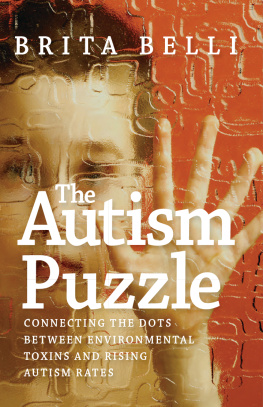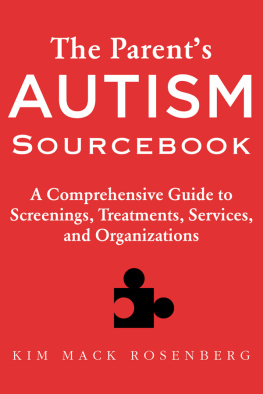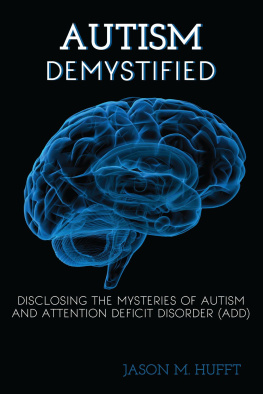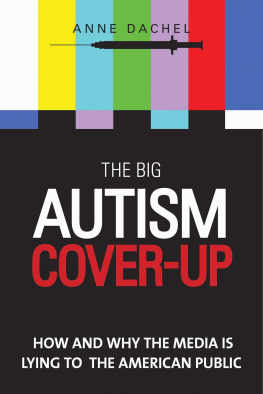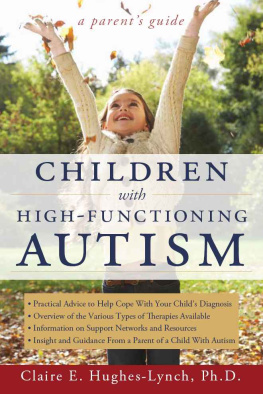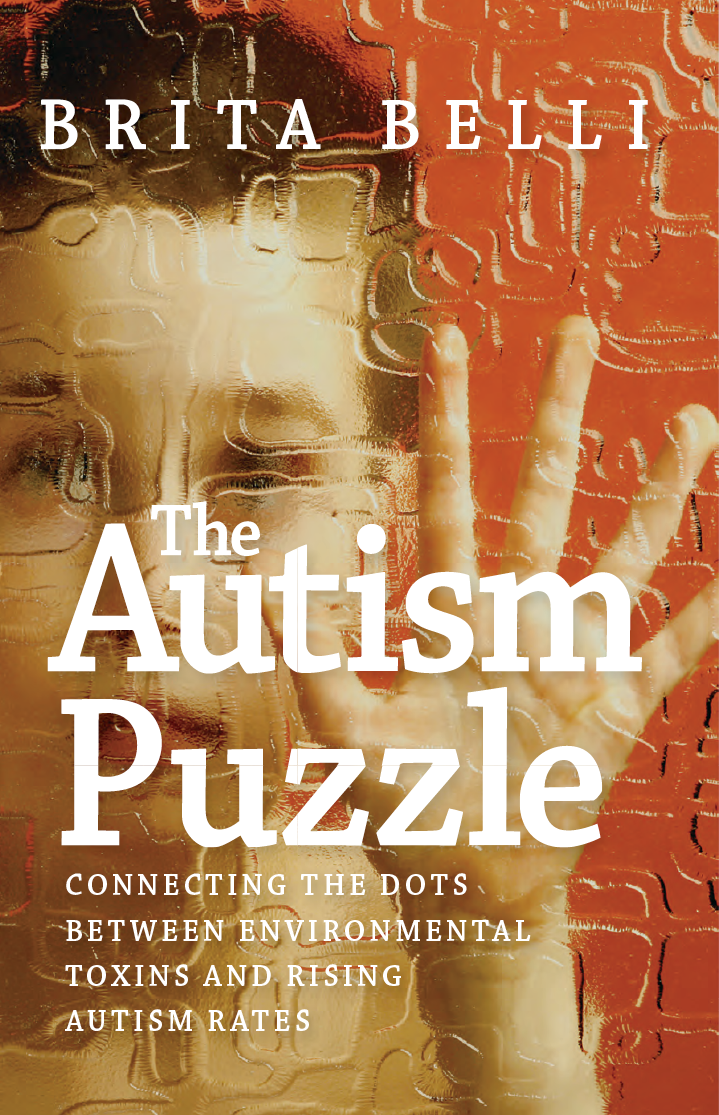
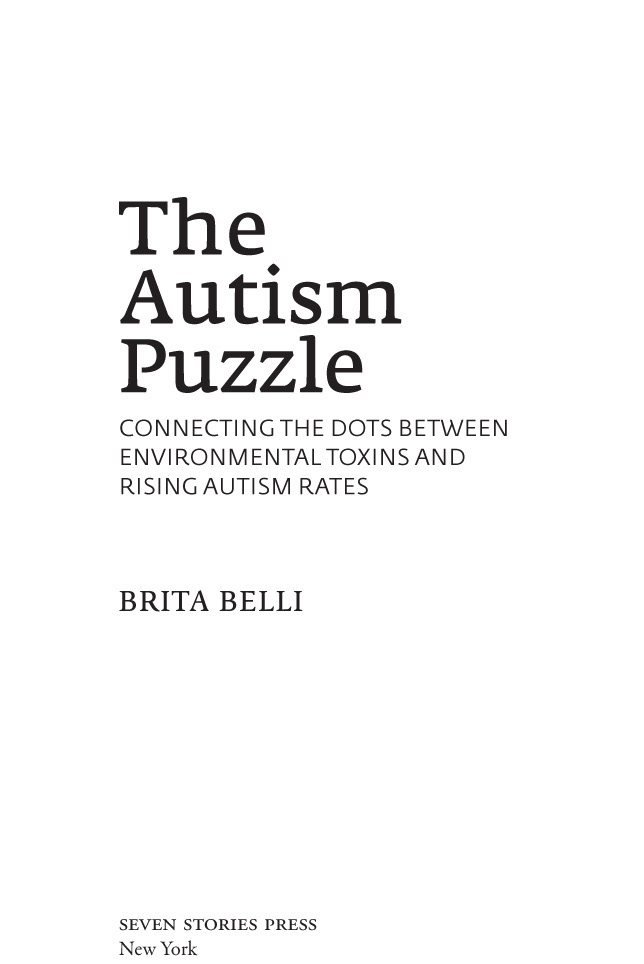
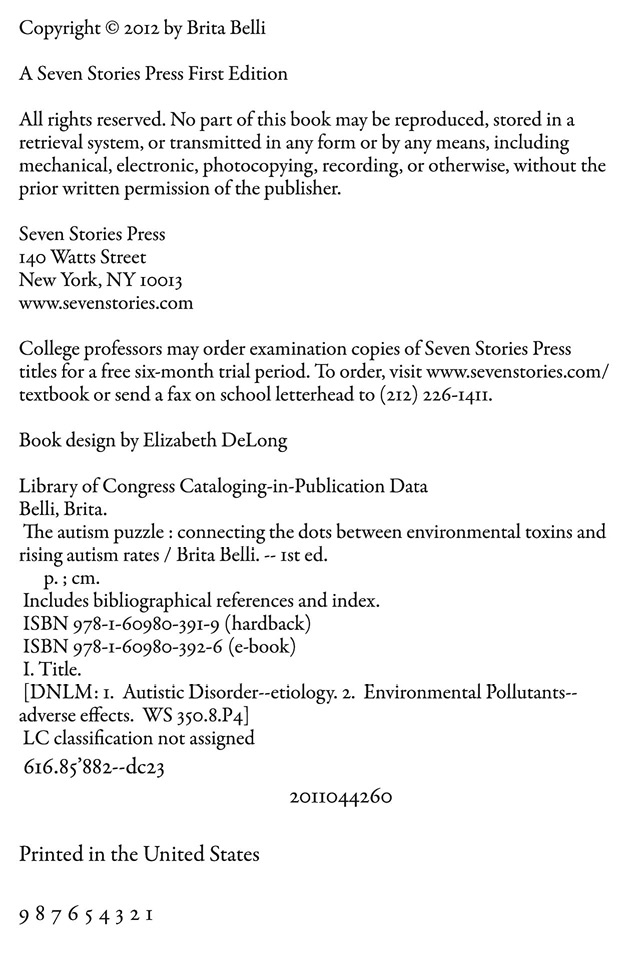
In loving memory of my father, Howard Jon Brundage
Contents
Introduction
One
Two
Three
Four
Five
Six
Seven
Introduction
The Missing Percentage
Why Genetics Alone Cant Explain the Steady Climb
In Lewis Carrolls Alices Adventures in Wonderland , the lovable Hatter (Carroll didnt actually call his character the Mad Hatter, though most people do) was based on eighteenth century hatmakers. Hatters were mad for a reason: they toiled in poorly ventilated rooms using orange-colored mercury nitrate to cure fur into felt, which could be more easily shaped and manipulated into the latest fashions. The process was called carroting due to the solutions color. After years spent shaping hats, these workers began exhibiting signs of neurological damagestumbling, slurred speech, and shaking that became known in the city of Danbury, Connecticut, once the hat-making capital of the world, as the Danbury shakes. In its heyday, the city produced five million hats per year. When the hat factories closed, the shaky legacy remained. Mercury from the factories wastewater settled in the sediment of the citys Still River. You could tell the color of the hats you were making by looking at the Still River, eighty-six-year-old Bob Reynolds, a former hat factory worker, told local newspaper The News-Times . Ted Hammer whose uncle counted several hatters among his friends recalled how the men would share a drink in the factorys back room, some shaking so badly they could hardly hold their glasses of whiskey: My uncle used to tell me [in regards to his shaking friend], Hold his glass. Dont let whiskey go to waste. A few drinks in, the shakes improved, but they never went away.
A host of symptoms follow within hours of inhaling mercury vapors, including tremors, corrosive bronchitis with fever chills, abdominal cramping with diarrhea, and central nervous system damage that can lead to visual and psychotic disturbances. Women who become pregnant by men who are chronically exposed to mercury vapors have higher rates of spontaneous abortion.
Direct exposure to mercury in the workplace is far less prevalent now than it was in the day of the Danbury hatters. Mercury poisoning can still occur in factories that produce chlorine, medical equipment, fluorescent lights, pesticides, dental amalgams, and certain chemicals, but stories like that of the hatters have led to safety regulations meant to lower employees risk. However, the general population is increasingly subject to subtler, yet equally damaging, chemical hazards present in our food and environment: mercury in the fish we eat and bisphenolA (BPA) in our canned food; phthalates and flame retardants we breathe in our household dust; water-based disinfectants we inhale while showering and insecticides we inadvertently absorb while treating our homes and pets. Doctors and scientists have begun to identify a relationship between increased exposures to such chemicals with simultaneous increases in various illnesses and disorders in childrenin particular, autism.
Autism affects an average of 1 in 110 kids in the US according to the most recent 2006 data from the Centers for Disease Control and Prevention
With the populations increasing exposure to mercury and other chemicals in our food, water, air, and products, the possibility of a connection between environmental toxins and autism cannot be ignored. Until now, the search for answers regarding the rising autism epidemic has focused almost entirely on looking for genetic causes, and the focus makes sense. Autism Spectrum Disorder (ASD), a continuum of psychological conditions characterized by inhibited social functioning and repetitive behavior, snakes through family trees, touching a brother, an uncle, a daughter in different generations, one with symptoms so severe he cant tie his shoes, count to ten, or look you in the eyes, who reacts with screaming terror to a shower and must live his adult life under constant care; another with Aspergers syndrome, prone to obsessions, with an eerily precise memory and few friends, but able to hold a job and buy a housewhats known in autism circles as high functioning.
Scientists Have the Genetic Causes of Autism in Their Sights, cheered a June 9 , 2010, headline in The Guardian .
The search for environmental triggers for autism turned a major corner in July 2011 with the release of the California Autism Twins Study. Twins offer an ideal way for researchers to assess how much of a disease or disorder is genetic, since identical twins have the exact same genetic makeup and fraternal twins share 50 percent of genes. In this case, researchers assessed 192 twin pairs representing diverse socioeconomic backgrounds born in California between 1987 and 2004 , each of which included at least one twin with autism. Seventy-seven percent of male identical twins both had an ASD, and 31 percent of male fraternal twins. Among female twins, just 50 percent of identical twins both had the disorder, and 36 percent of fraternal twins. Mathematical modeling led the researchers to conclude that environmental factorswhich were not specifically namedplayed a larger role than genetic heritability in the majority of autism cases. Heritability, they found, could account for 38 percent of ASD cases, while a shared twin environmental component accounted for 58 percent of cases. The report concluded, Although genetic factors also play an important role, they are of substantially lower magnitude than estimates from prior twin studies of autism.
Other researchers are looking beyond genetics to a field called epigenetics, which means, literally translated, over or above genetics. Its been called the ghost in our genes, the hidden influence that makes our brain cells, or our heart cells, uniquely ours. All the cells in the body start out with the exact same genetic information. But some cells will go on to be liver cells, or heart cells, or brain cells. As Dr. Shuk-Mei Ho, chair of environmental health at the University of Cincinnati says, epigenetics are the means or ways that the cell can petition the genome, the cell, into its active and inactive components [so that] some cells will become a heart cell, some cells will become a neuron and so on. Epigenetics turns specific genes on or off, and can be influenced by almost anythingenvironmental toxins, poor dietary choices, drugs, stress. Epigenomes dont change the DNAthe genomeitself, but leave a lasting impression.
Dr. Ho says, epigenetics is the link, the connector, between the environment and the genome. The grandsons had inherited some means of adapting that gave them an advantage genetics alone couldnt explain.
The latest research reinforces the idea that when it comes to autism, genetics cant tell the whole story. The July 2011 study from California indicated that in 58 percent of identical twin pairs, one sibling has autism and the other does not, despite the fact that they share identical genetic information. According to the Centers for Disease Control and Prevention (CDC), an estimated 1 in 110 kids have ASDthats about 690,000 total.
And the rate of cases is climbing rapidly with no sign of abating. In the most recent CDC study of autism in the US, looking at the prevalence of the disorder among eight-year-olds in eleven statesAlabama, Arizona, Colorado, Florida, Georgia, Maryland, Missouri, North Carolina, Pennsylvania, South Carolina, and Wisconsinthe agency found that rates went up 57 percent between 2002 and 2006. Boys were 4.5 times as likely to have the disorder as girls.
Next page
